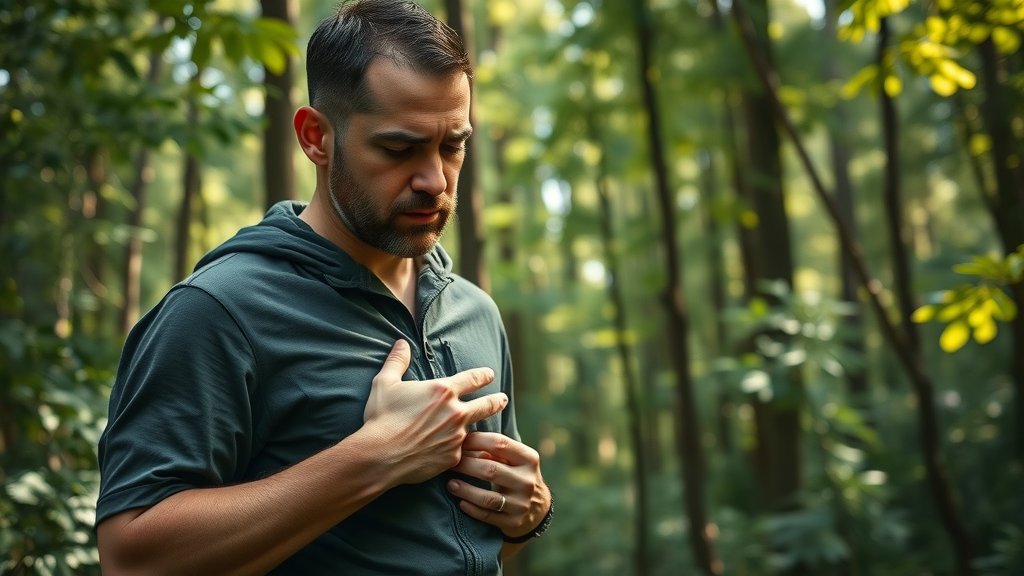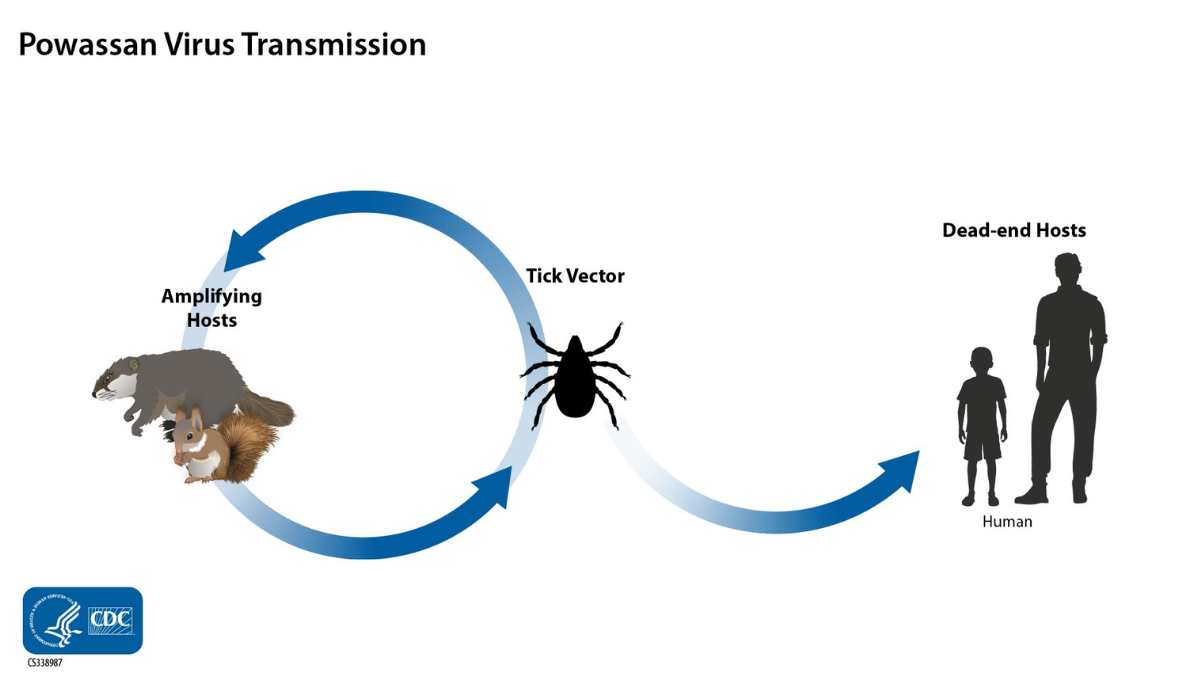Did you know that Powassan virus can infect you in just 15 minutes after a tick bite—much faster than the hours it takes for Lyme disease to spread? This lesser-known but deadly virus is not just another tick-borne illness; it’s a fast-acting, brain-invading threat that health officials say demands immediate attention. As tick populations and tick bites rise due to climate change, understanding and acting against Powassan virus is more urgent than ever.
In this comprehensive viewpoint, you’ll learn the distinct dangers posed by this neglected virus, real-world examples of severe disease, why traditional safeguards may fall short, and how you can take action to protect yourself and your community. Powassan virus spreads much faster than Lyme disease and can cause fatal brain inflammation —and the time to act is now.
The Startling Reality: Powassan Virus, Lyme Disease, and Rapid Spread
"A single tick bite can transmit the Powassan virus in as little as 15 minutes—compared to hours for Lyme disease."
-
Powassan virus is spreading faster than ever in some regions.
-
Cases of severe disease have increased significantly over the past decade.
-
Fatal brain inflammation is a documented risk of Powassan virus, often overlooked by the public.
The Powassan virus is emerging as a serious public health concern in regions previously untroubled by tick-borne illnesses. Unlike Lyme disease, which takes at least 24 to 48 hours for an infected tick bite to transmit, the Powassan virus can be passed from tick to human in just a quarter of an hour. As a result, even those who are meticulous with post-hike tick checks remain at risk.
Rising numbers of reported cases and the geographic spread of both the deer tick and blacklegged tick—common carriers—highlight the urgent need for public awareness and action. The risk of severe disease has climbed, as has the potential for long-lasting neurological damage or fatal brain inflammation in those infected. Yet, many health officials say the threat of Powassan virus is often discounted even as tick-borne illnesses gain attention nationwide.

Understanding Powassan Virus: Distinct Dangers Beyond Lyme Disease
How Powassan Virus Spreads Much Faster Than Lyme Disease
Powassan virus is spread by the bite of an infected tick—often the blacklegged tick or deer tick. What sets Powassan apart from better-known tick-borne diseases like Lyme is the speed of virus transmission . Whereas Lyme disease typically requires the deer tick to remain attached for 24-48 hours before Borrelia burgdorferi bacteria can cross over, Powassan virus is introduced into the bloodstream in as little as 15 minutes.
This rapid transmission makes risk mitigation far more challenging. Tick checks, while still essential, offer less reassurance with Powassan because the window for preventive action is so short. It’s not merely about how many tick bites occur, but how fast the virus is spread after a bite. This is a crucial public health distinction that underscores why Powassan virus deserves separate, high-priority attention from health officials and the general public alike.
|
|
|
Powassan Virus vs Lyme Disease: Key Transmission and Disease Differences |
|
Feature |
Powassan Virus |
Lyme Disease |
|---|---|---|
|
Transmission Time |
Within 15 minutes |
24-48 hours |
|
Potential for Fatal Brain Inflammation |
Yes |
Rare |
|
Treatment or Vaccine |
None |
Antibiotics available |

Severe Disease: Risks and Outcomes After a Tick Bite
One of the most alarming realities about Powassan virus is the severity of outcomes following an infected tick bite. While not all exposures will result in symptoms, cases of Powassan virus disease can range from mild flu-like symptoms to tragic, irreversible brain and spinal cord injury. Severe cases often progress rapidly, leaving little room for early intervention or treatment.
In the United States, the number of serious neurological complications—such as encephalitis (brain inflammation) or meningitis—linked to Powassan virus is rising. In some instances, fatality rates have been reported as high as 10%, with survivors frequently experiencing long-term neurological damage, including loss of coordination and persistent cognitive deficits. Prompt recognition after a tick bite and immediate medical attention are essential but challenging given the nondescript early symptoms, which may simply include fever, headache, or confusion.
Tick Bites and Regional Public Health Concerns
The increase in Powassan virus cases can be partly attributed to shifting tick habitats and the northward movement of blacklegged ticks, a phenomenon accelerated by climate change. Deer ticks and other carriers are now flourishing in areas previously considered low-risk. This poses new challenges to public health officials, who must quickly adapt surveillance and public messaging in response to a disease that many have never heard of.
"With changing climate, tick populations are moving northward, bringing Powassan virus into new communities." — Public Health Alert.
Critically Examining the Failure to Address Powassan Virus Spread
Tick Bites: The Underestimated Pathway for Virus Spread
The pathway for Powassan virus spread starts with a single tick bite . Unfortunately, many underestimate the risk associated with even brief encounters in grassy or wooded areas. Short outdoor excursions or minor lapses in personal protection can quickly result in exposure. The focus of most public messaging remains on Lyme disease despite mounting evidence that Powassan virus is spread with disturbing speed and causes severe disease more frequently.
Blacklegged ticks and deer ticks, now found in more northerly and urban environments, are playing a significant role in expanding Powassan’s reach. For public health, this means shifting the conversation beyond treated with antibiotics for Lyme disease, and acknowledging that antibiotics are ineffective against Powassan virus disease . Without a treatment or vaccine, prevention is the only current line of defense.
Public Health Oversight and the Growing Threat
There remains a gap in how public health systems track, respond to, and communicate about Powassan virus. With relatively few cases reported each year compared to Lyme disease, health officials often face scrutiny over whether additional resources should be devoted to this growing but “rare” threat. Yet, the increase in severe cases and regional outbreaks calls for a more robust and proactive approach.
Public awareness is often hindered by a lack of public health messaging, leaving residents unaware not only of the dangers but also of the lack of effective treatments or rapid diagnostics . Continued oversight and hesitation gives Powassan virus more opportunity to spread and adapt, especially as deer tick populations establish footholds in new communities.
Why No Treatment or Vaccine Exists for Powassan Virus
Despite comparisons to West Nile and other emerging infectious diseases, there is no specific treatment or vaccine for Powassan virus disease. Current care is supportive, and severe neurological damage may be irreversible. This is largely due to the relatively low numbers of reported cases in the past, which have made funding and large-scale studies less likely. As cases of Powassan virus rise and the public becomes more aware of its dangers, the demand for research and solutions should become a top public health priority.
Without pharmaceutical interventions, tick repellent, protective clothing, and rapid tick checks remain the frontline strategy to slow virus spread and safeguard against severe disease. Advocacy for increased research efforts and development is needed urgently, before the window to act closes further.

Comparing Severe Disease Outcomes: Powassan Virus Versus Lyme Disease
-
Powassan virus causes potentially fatal brain inflammation (encephalitis) in a significant minority of cases.
-
Lyme disease is rarely fatal and rarely causes neurological complications as severe as Powassan.
-
Early diagnosis is challenging as symptoms can be vague or flu-like for both diseases.
What truly distinguishes Powassan virus from Lyme disease is the frequency and severity of neurological outcomes. Inflammation of the brain and spinal cord (encephalitis or meningitis) is a hallmark complication of severe Powassan virus disease, frequently leading to death or permanent neurological deficits, such as loss of coordination or ongoing cognitive decline. While Lyme disease can also affect the nervous system, its impact is far more reversible and rarely results in fatal cases.
This contrast should not be interpreted as minimizing Lyme disease—untreated Lyme can also cause chronic health issues—but it does reemphasize just how dangerous and overlooked Powassan virus remains. Both tick-borne diseases demand vigilance, yet it is Powassan that commands a new level of urgency in messaging, research, and prevention.
Is the Powassan Virus Fatal?
Yes, Powassan virus can be fatal, especially when severe inflammation of the brain or spinal cord develops. Fatality rates in severe cases range from 10%-15%, and survivors are often left with long-term neurological impairment. Rapid onset and the lack of effective treatment further elevate the risk associated with this virus.
Unlike Lyme disease, which is typically treated with antibiotics and rarely results in death, Powassan virus stands out for its ability to cause catastrophic and sometimes rapidly fatal illness. Public health education, immediate recognition, and fast response to symptoms following any tick bite are essential for improving survival odds.
What Are the Symptoms of Powassan Virus in Humans?

Powassan virus infection can range from silent (asymptomatic) to dangerously severe. Early symptoms can include fever, headache, vomiting, weakness, confusion, and sometimes seizures or loss of coordination as the disease progresses. These symptoms often reflect the onset of nervous system involvement and can be mistaken for other illnesses.
In severe cases, inflammation of the brain (encephalitis) and spinal cord can quickly follow. This leads to a rapid neurological decline, potentially including coma and death. Timely diagnosis is vital but challenging, as the same early signs could easily be written off as minor infections or fatigue, both for Powassan and Lyme disease.
What Is the Difference Between Lyme Disease and Powassan Virus?
The key difference between Lyme disease and Powassan virus concerns the speed of transmission, symptoms, and outcomes. Lyme disease, caused by the bacterium Borrelia burgdorferi, requires prolonged tick attachment, is usually treated with antibiotics, and rarely leads to fatal cases. The symptoms generally develop slowly, with hallmark signs like bulls-eye rash and joint pain.
In stark contrast, Powassan virus spreads much faster after tick bites and leads to potentially fatal brain inflammation in a notable minority of cases. There is no treatment or vaccine, and severe disease often results in irreversible neurological damage. Both diseases can cause flu-like symptoms, but the stakes are higher and outcomes more dangerous with Powassan.
Can Powassan Virus Be Cured?
Currently, there is no cure for Powassan virus disease . Medical care is supportive, focusing on managing severe disease symptoms like brain swelling, seizures, or respiratory distress. Unlike Lyme disease, which is routinely treated with antibiotics, Powassan virus has no antiviral drugs proven effective in humans. Prevention remains the best—and only—effective strategy.
This underscores the need for rapid diagnosis and urgent investment in research for targeted therapies or vaccines. Until breakthroughs occur, the best protection is prevention of tick bites through proven methods like tick repellent, careful tick checks, and public health vigilance.
Addressing the Spread: What Should Public Health and Individuals Do?
-
Raise awareness of rapid transmission risk and severe health consequences.
-
Expand public health surveillance in emerging regions.
-
Support research for a vaccine or rapid diagnostic tools.
-
Educate the public about tick bite prevention: use repellents, check for ticks after outdoor activities, wear protective clothing.
"Ignoring the Powassan virus threat means letting another pandemic quietly brew in our backyards."

Both public health agencies and ordinary citizens play a role in halting Powassan virus spread. Rapid, regionally targeted awareness campaigns and expanded testing for tick-borne diseases should become core strategies. Encouraging consistent use of EPA-registered tick repellents, promoting safe outdoor habits, and lobbying for increases in infectious diseases funding are critical next steps in prevention.
Similarly, supporting laboratories and universities conducting research on vaccines or rapid diagnostic tests for Powassan helps accelerate the timeline for real medical breakthroughs. The urgency is real—Powassan virus spreads much faster than Lyme disease and can cause fatal brain inflammation if proactive measures are not taken.
Expert Opinions: The Need for Preventive Strategies against Powassan Virus
Why Powassan Virus Deserves the Same Attention as Lyme Disease
Experts agree: Powassan virus must be regarded as a major public health threat. Like Lyme disease, it is spread by tick bites, but its capacity to produce fatal or devastating neurological damage should place it front and center in all tick-borne disease discussions. Yet, it lags far behind Lyme in funding, awareness, and surveillance.
The rapid spread of Powassan virus, the lack of a treatment or vaccine, and the increasing number of severe disease cases mean it’s time for health officials to amplify outreach and prevention programs on par with those for Lyme disease and West Nile. Including Powassan in routine tick-borne disease panels, monitoring new tick habitats, and making preventive information readily available are vital first moves.
Treatment or Vaccine: How Close Are We to a Medical Breakthrough?
Major research labs are only just beginning to prioritize Powassan. Some promising antiviral agents and vaccine candidates are in very early stages, but clinical trials are years away from delivering results. Collaborative efforts—between academic researchers, government health officials, and private biotechnology firms—will be essential for accelerating progress.
In the meantime, public pressure and advocacy remain crucial for securing the necessary resources and attention. The scale of response must match both the speed at which Powassan virus is spread and the severity of its consequences.
Countering Myths: Dispelling Complacency about Powassan Virus
-
Myth: Powassan virus is too rare to worry about.
-
Myth: All tick bites are equally risky.
-
Myth: There are effective treatments for all tick-borne illnesses.
Complacency is dangerous. Powassan virus may have once been rare, but virus spread is accelerating with climate change and expanding tick populations. Not every tick bite carries equal risk—only certain species carry Powassan—but blacklegged and deer ticks are multiplying in many areas. Perhaps most dangerous of all, the belief that “modern medicine can cure any tick-borne virus disease” leaves both patients and doctors unprepared for the unique risks of Powassan.
Knowing the difference between Lyme and Powassan, recognizing the unparalleled severity of Powassan virus disease, and understanding the lack of available treatments are each essential to making informed choices outdoors and demanding better public health action.
Preventing Tick Bites: Simple Steps to Reduce Your Risk
-
Avoid wooded and brushy areas with high grass.
-
Use EPA-registered insect repellents containing DEET or permethrin.
-
Perform thorough tick checks after outdoor activities.
-
Shower soon after being outdoors.

Prevention is the most effective defense against Powassan virus. Whether you’re enjoying a hike, camping, gardening, or letting your children play outdoors, put these preventive steps to work. Tick repellent, regular tick checks, and barrier clothing reduce exposure risk dramatically. Showering after outdoor activity helps find and remove ticks before they bite. Education—and action—are your strongest allies in staying safe from both Lyme disease and the fast-spreading Powassan virus.
Make tick avoidance a habit, and share prevention tactics with family and neighbors. Each safe choice helps blunt the impact of a virus that spreads with unprecedented speed and severity compared to other tick-borne diseases.
Frequently Asked Questions about Powassan Virus Spreads Much Faster Than Lyme Disease and Can Cause Fatal Brain Inflammation
-
How common is Powassan virus infection?
Powassan virus cases are still less common than Lyme disease, but numbers are rising in areas where deer ticks and blacklegged ticks are spreading. Extremely rapid transmission and increased tick habitats mean everyone in affected regions should stay vigilant. -
Can pets transmit Powassan virus?
Pets, especially dogs, can bring ticks indoors after outdoor play. While pets themselves generally do not transmit the virus directly to humans, the tick bites they bring inside may contain Powassan virus, increasing human exposure risk. Always check pets for ticks after they’ve been outside. -
Are certain groups at higher risk of severe disease?
Yes. Older adults, young children, and those with weakened immune systems face the highest risk for severe Powassan virus disease and complications like encephalitis or meningitis. However, anyone can become seriously ill if bitten by an infected tick.
Key Takeaways: Powassan Virus Spreads Much Faster Than Lyme Disease and Public Health Implications
-
Powassan virus spreads much faster than Lyme disease after a tick bite and can cause fatal brain inflammation.
-
There is no specific treatment or vaccine for Powassan virus.
-
Rising tick populations put more regions and people at risk each year.
As tick habitats expand, new communities face the dual threats of increased tick bite frequency and faster, more dangerous virus spread. Public health implications are significant, and rapid adaptation is needed to avoid preventable fatalities and severe disease cases.
Urgency and Advocacy: What Should Be Done Now About Powassan Virus?
Tackling Powassan virus demands a multipronged approach: immediate awareness campaigns, new funding for research, accessible rapid testing, and large-scale public messaging on the unique severity of this emerging threat. Every person, policymaker, and health professional must elevate Powassan virus as a critical public health priority.
Support local and national efforts, volunteer for prevention programs, and demand government accountability for infectious diseases research. The window to halt Powassan virus spread is closing fast—the time for action is right now.
You Can Make a Difference Against Tick-Borne Disease
Every tick bite prevented, every conversation about Powassan virus, every step taken to demand better research and resources helps protect lives. By prioritizing prevention, advocacy, and education, we can stem the tide of a virus spreading much faster—and with far deadlier consequences—than Lyme disease.
[Watch this vital video to see how Powassan virus infects, its rapid time frame, and essential prevention tips from infectious disease experts and public health officials.]
[Discover misconceptions about Powassan virus, the reality of tick bites, and how you can protect your family, in this myth-busting expert guide.]
Conclusion
Know the risks, use proven prevention, demand urgent public health action, and help drive awareness—together, we can curb the spread of Powassan virus before it claims more lives.
 Add Row
Add Row  Add
Add 




Write A Comment